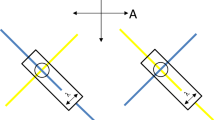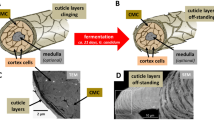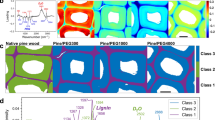Abstract
THE celluloso of the cell-wall and fibres of most plants contains closely associated polysaccharide material which is generally a xylan. The cotton hair is unique in being free from xylan, but manilla hemp, jute and sisal, for oxamplo, may contain as much as 15–20 per cent. The view has been put forward tentatively that tho xylan molecules in such fibres participate in the micelles and are oriented in the same direction as the cellulose chains1: the period along the fibre-axis of xylose residues in oriented xylan would be very much tho same as that of the glucose residues in cellulose, and their presence should make no fundamental difference to the X-ray photograph. Tn support of this view there is the well-known fact that actually no such difference is observed in the ordinary way.
This is a preview of subscription content, access via your institution
Access options
Subscribe to this journal
Receive 51 print issues and online access
$199.00 per year
only $3.90 per issue
Buy this article
- Purchase on Springer Link
- Instant access to full article PDF
Prices may be subject to local taxes which are calculated during checkout
Similar content being viewed by others
References
Norman, Science Progress, 27, 299; 1933.
Cf. Astbury and Woods, Phil. Trans. Roy. Soc., A, 232, 333; 1933.
NATURE, 136, 69, July 13, 1935.
Author information
Authors and Affiliations
Rights and permissions
About this article
Cite this article
ASTBURY, W., PRESTON, R. & NORMAN, A. X-Ray Examination of the Effect of Removing Non-Cellulosic Constituents from Vegetable Fibres. Nature 136, 391–392 (1935). https://doi.org/10.1038/136391b0
Issue Date:
DOI: https://doi.org/10.1038/136391b0
This article is cited by
-
Studies of silica in the oat plant
Plant and Soil (1963)
-
Jute — world’s foremost bast fibre, II. Technology, marketing, production and utilization
Economic Botany (1956)
-
Association of Glucose, Arabinose and Xylose in Jute
Nature (1953)
-
Association of Xylan with α-Cellulose in Jute
Nature (1950)
-
Der Aufbau der Pflanzlichen Zellwände
Protoplasma (1936)
Comments
By submitting a comment you agree to abide by our Terms and Community Guidelines. If you find something abusive or that does not comply with our terms or guidelines please flag it as inappropriate.



